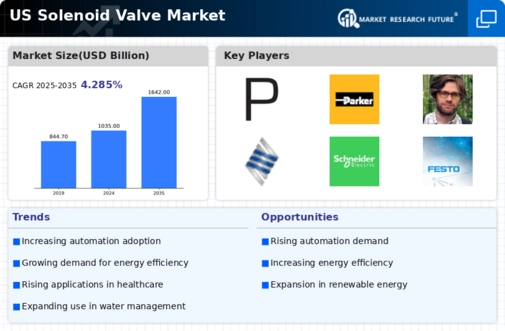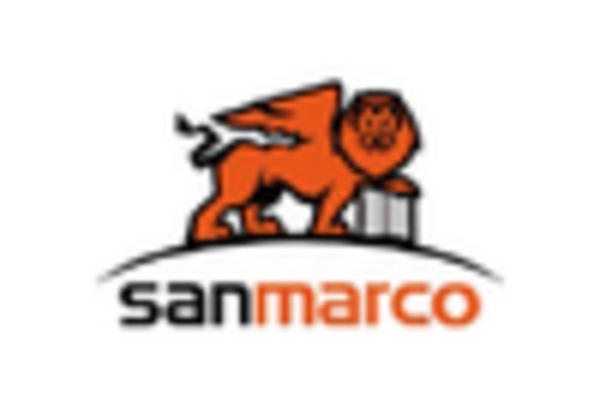Expansion of HVAC Systems
The expansion of heating, ventilation, and air conditioning (HVAC) systems in residential and commercial buildings is significantly impacting the solenoid valve market. As energy efficiency becomes a priority, solenoid valves are increasingly employed in HVAC systems to regulate fluid flow and enhance system performance. The US HVAC market is expected to reach approximately $100 billion by 2026, with solenoid valves playing a crucial role in optimizing energy consumption. This growth presents a substantial opportunity for solenoid valve manufacturers to develop products that meet the stringent energy efficiency standards set by regulatory bodies. Additionally, the increasing focus on smart HVAC solutions further drives the demand for advanced solenoid valves, which can be integrated into automated systems for improved control and monitoring.
Increased Focus on Safety Standards
The solenoid valve market is experiencing a shift due to the increased focus on safety standards across various industries. Regulatory bodies in the US are implementing stringent safety regulations that necessitate the use of reliable and efficient solenoid valves in critical applications, such as oil and gas, pharmaceuticals, and food processing. This heightened emphasis on safety is likely to drive demand for high-quality solenoid valves that comply with industry standards. The market for safety-compliant solenoid valves is projected to grow as companies prioritize risk management and operational safety. Manufacturers may need to enhance their product offerings to include features that ensure compliance with these regulations, thereby positioning themselves favorably in the competitive landscape. This trend suggests a potential for innovation in the design and functionality of solenoid valves to meet the evolving safety requirements.
Rising Demand in Manufacturing Sector
The manufacturing sector in the US is experiencing a notable surge in demand for automation and efficiency, which directly influences the solenoid valve market. As industries strive to enhance productivity, solenoid valves are increasingly utilized in various applications, including assembly lines and process control systems. The market is projected to grow at a CAGR of approximately 5.5% from 2025 to 2030, driven by the need for precise control in manufacturing processes. This trend indicates a robust opportunity for solenoid valve manufacturers to innovate and cater to the evolving needs of the manufacturing industry. Furthermore, the integration of solenoid valves in automated systems is likely to streamline operations, reduce downtime, and improve overall efficiency, thereby solidifying their role in the manufacturing landscape.
Growth in Water and Wastewater Management
the solenoid valve market will benefit from the growing emphasis on water and wastewater management in the US. With increasing concerns over water scarcity and environmental sustainability, municipalities and industries are investing in advanced water treatment solutions. Solenoid valves are essential components in these systems, facilitating precise control of water flow and treatment processes. The US water and wastewater treatment market is projected to exceed $50 billion by 2027, indicating a strong demand for solenoid valves in this sector. This trend suggests that manufacturers may need to focus on developing durable and reliable solenoid valves that can withstand harsh conditions while ensuring compliance with environmental regulations. The integration of smart technologies in water management systems could further enhance the functionality and appeal of solenoid valves.
Technological Advancements in Fluid Control
Technological advancements in fluid control systems are significantly shaping the solenoid valve market. Innovations such as digital solenoid valves and IoT-enabled devices are enhancing the capabilities of traditional solenoid valves, allowing for more precise control and monitoring of fluid dynamics. As industries adopt these advanced technologies, the demand for high-performance solenoid valves is likely to increase. The market for smart solenoid valves is expected to grow at a CAGR of around 7% over the next five years, driven by the need for automation and real-time data analytics in various applications. This trend indicates that manufacturers must invest in research and development to stay competitive and meet the evolving demands of the market. The integration of artificial intelligence in fluid control systems may also open new avenues for solenoid valve applications.

















Leave a Comment